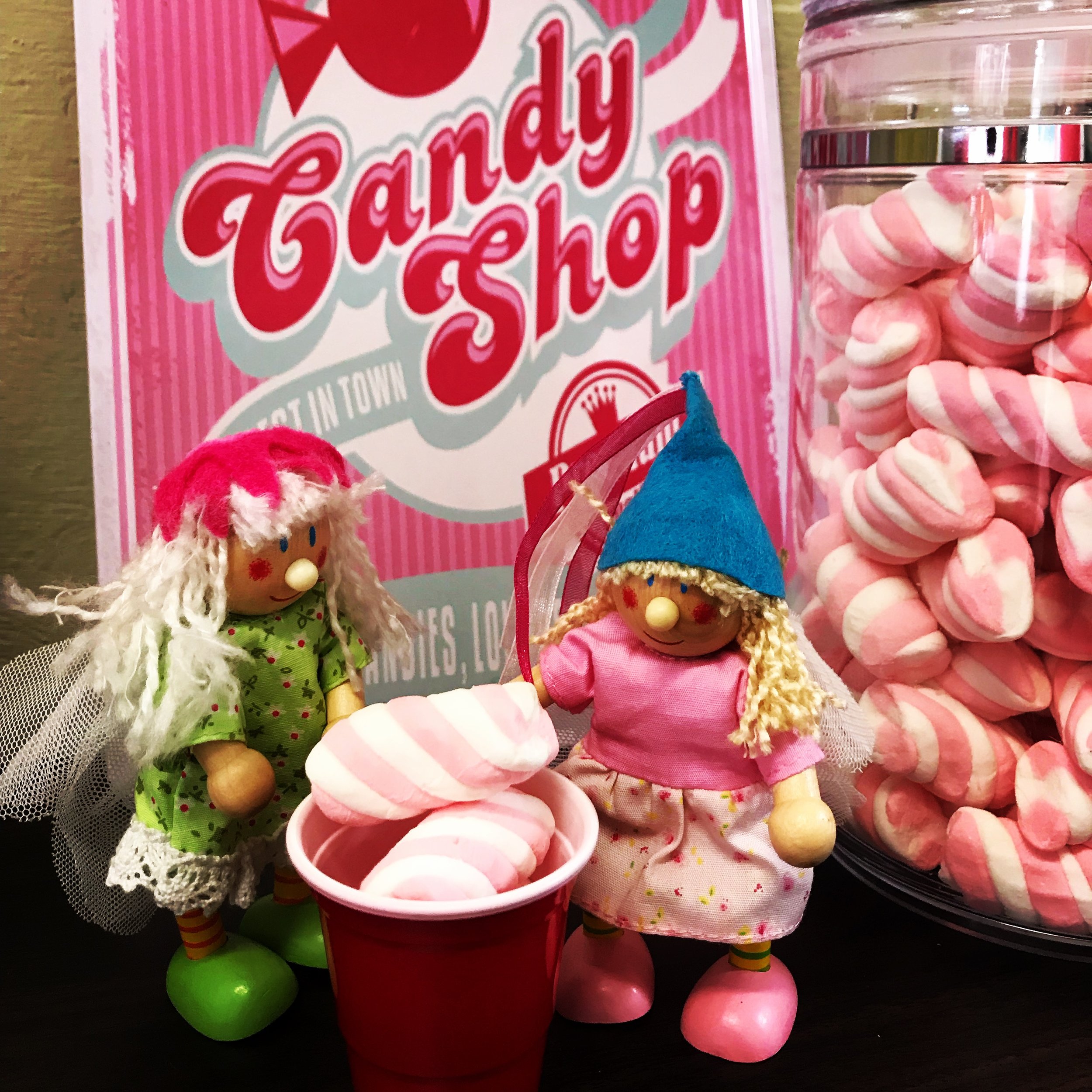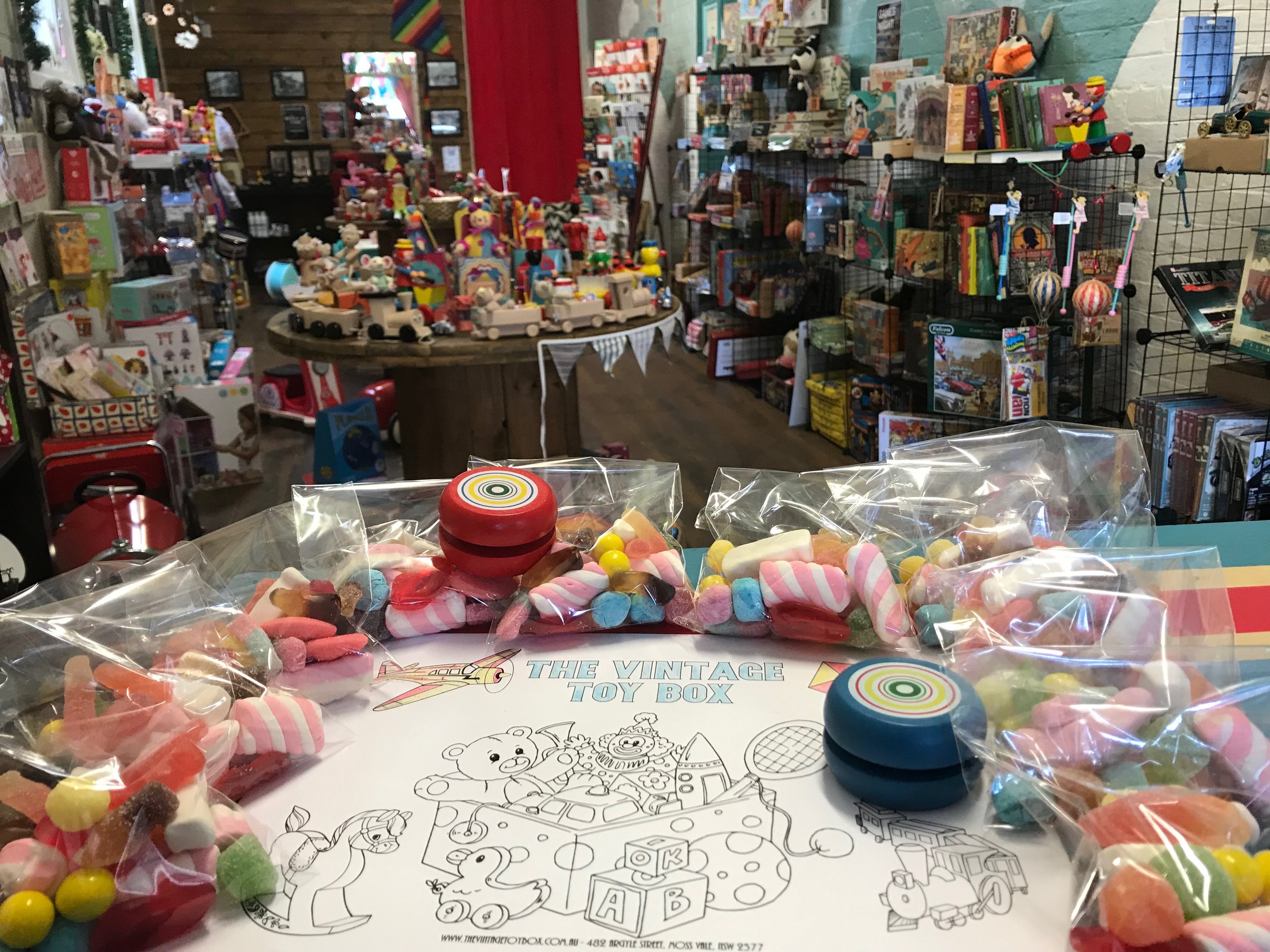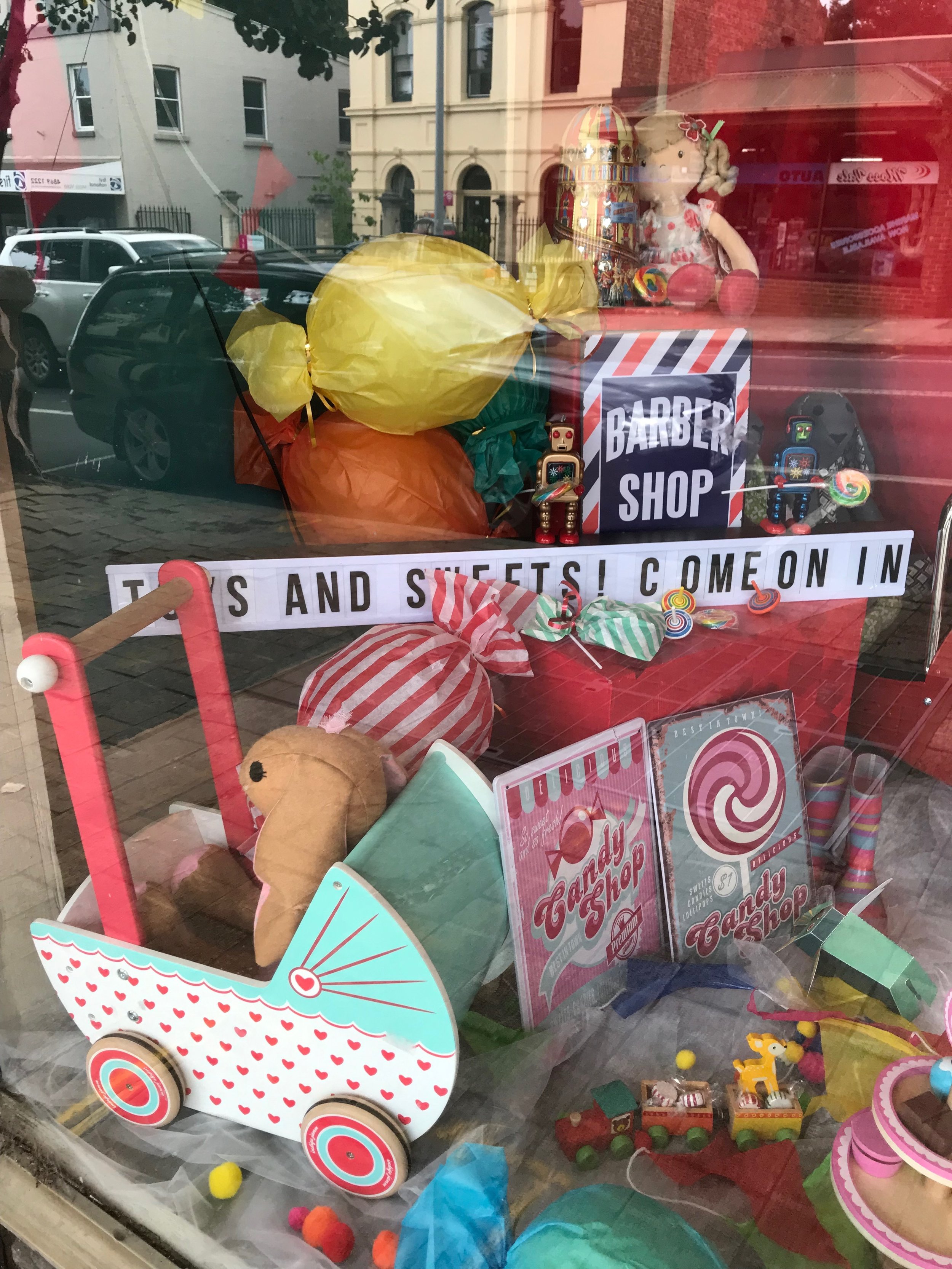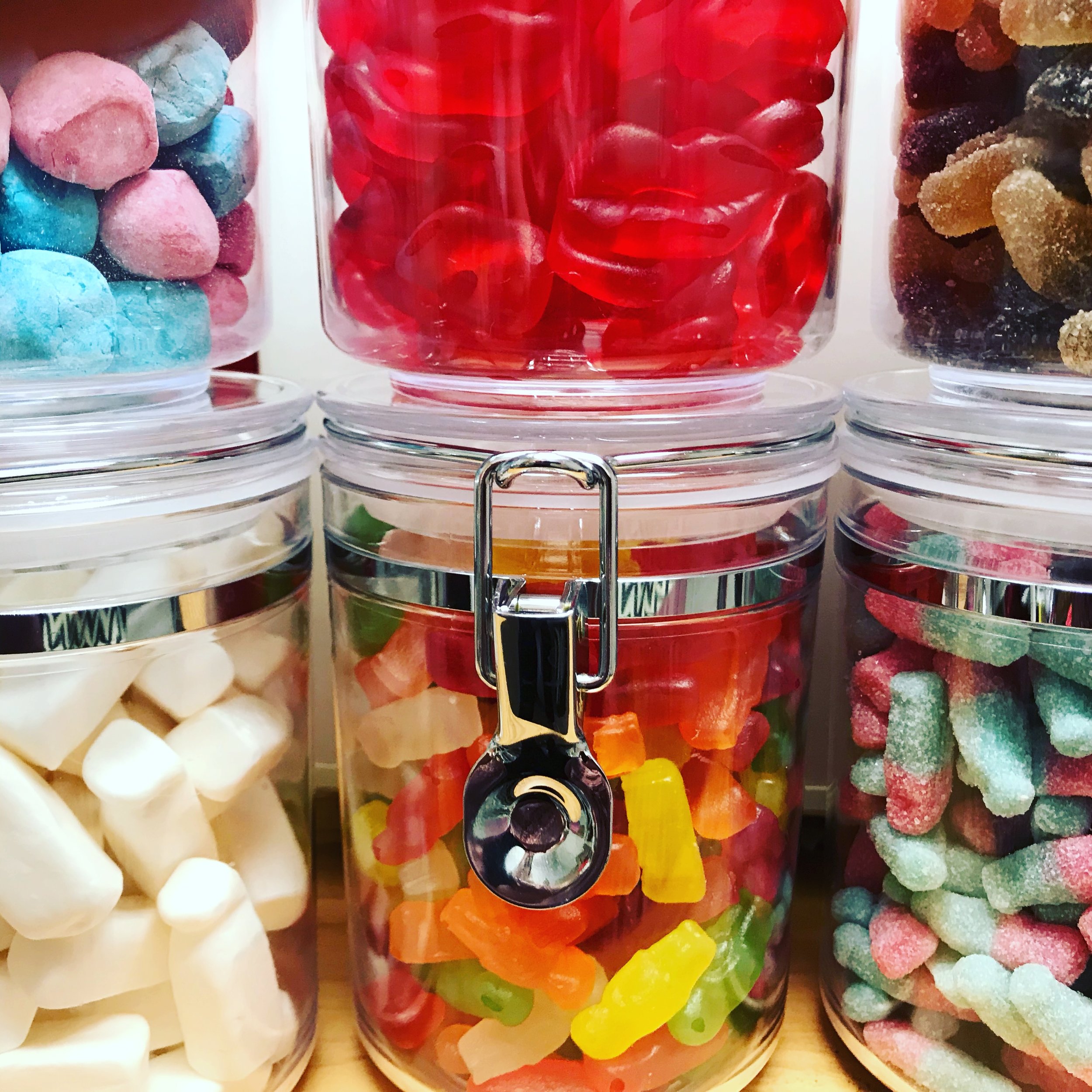Lollies Through Time
Now that we’ve also recently opened up a lolly shop in-store we thought we’d indulge our sweet tooth and take a look back at lollies through the ages, and learn a little more about candy through time.
Lollies can be traced all the way back to the ancient civilisations. In Egypt the Egyptians combined honey with various nuts and fruits and across the seas in Ancient Greece, China and Arabia they also used honey to bind fruits and flowers together.
Fun Fact: The word candy came from the Arabic word ‘Qandi’ which means ‘made of sugar’.
One of the oldest documentations of hard candy was Barley Sugar, made from Barley grain. Between the 6th and 4th centuries BCE the Greeks and Persians discovered a reed that grew in India that produced ‘honey without bees’. This marvel later became known as sugar cane. Pieces of sugar were produced by boiling the sugar cane juice. In ancient India this was called Khanda and dubbed the original candy.
Fun Fact: The word sugar derived from the Sanskrit word Sharkara.
Before the Industrial Revolution candy was actually considered as a form of medicine and was used to cool a sore throat or to calm the digestive system. Even earlier, during the Middle Ages candy was a combination of spices and sugar that were used to aid digestive issues and it was even available in tablet form.
Fun Fact: A very popular medicinal candy was called Chamber Spice and was made with ginger, cloves, juniper, berries, pine kernels, almonds and aniseed, all dipped in melted sugar to combine them all together.
In 1847 the invention of the candy press revolutionised the way candy was made, it made it possible to produce various shapes and sizes of candy all at once. Soon after in 1851 lolly makers began to use a revolving steam pan to assist in boiling the sugar which meant that confectioners did not have to stand over boiling sugar and continuously stir it, (and a few candy makers were saved from the boiling pot!).
Fun Fact: The lollipop was invented by a man named George Smith in 1908; he named it after his horse.
In the later 1800s lollies began to grow with more varieties being made. One of the first was Candy Corn followed closely by a butterscotch candy called Reed’s Rolls, Juicy Fruits, Tootsie Rolls and Peanut Brittle. Dum Dums lollipops were invented in 1924 with seven original flavours; lime, orange, lemon, coconut, pineapple, grape, butterscotch and cherry. They were called Dum Dums as the inventor said it was easy for children to say.!
Lollipops have been around long before Dum Dums came into the shops. They were being eaten in the Middle Ages as boiled sugar was eaten off sticks as it was a lot easier to consume. The famous Chuppa Chup lollipops were introduced in 1958 in a clear wrapper. It wasn’t until 10 years later that the iconic wrappers were brightly printed, swimming in colour.
Fun Fact: In 1950 Bobs Candy Canes were introduced to the shops and the brand was known as Cris Cringle.
The 1960s was a huge decade for lollies with Starburst Fruit Chews, sugar free gum, Razzles and Sweethearts hitting the market. The early 1970s saw the introduction of Laffy Taffy with a joke inside every wrapper.
How do you rock a baby alien to sleep? You rocket!
Why couldn’t the shoes go out to play? Because they were all tied up!
What room can no one enter? A mushroom!
These were just a few awesome jokes that were inside the Laffy Taffy wrappers.
Fun Fact: During 1958 the classic, fun, retro lolly was made on a string and it quickly became known as the Candy Necklace. However, the inventor and location still remain a mystery.
The ever so popular Pop Rocks were accidentally invented by a man named William Mitchell in 1975. He was a food scientist at General Foods, and he had a plan to make an instant soft drink. He put some sugar flavouring and mixed it with carbon dioxide and when he put them together the sensational lolly was born. It became extremely popular around the globe as it caused a mild ‘exploding’ sensation as soon as it is placed in your mouth and created the awesome crackling sound that people of all ages still love to hear.
Fun Fact: A confectioner named Leo Hirshfield named the Tootsie Roll after his daughter, her nickname was Tootsie.




